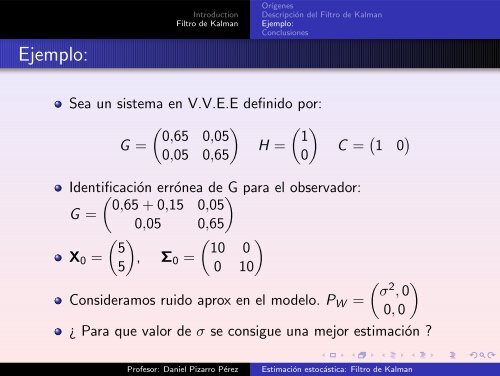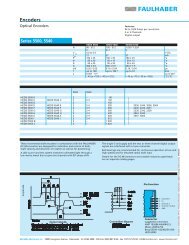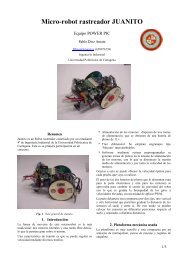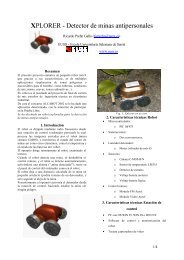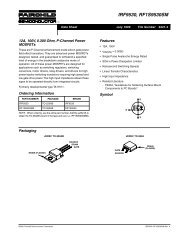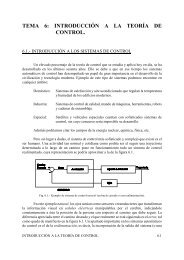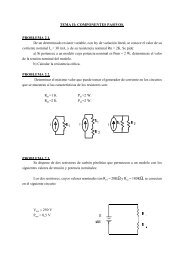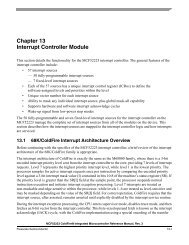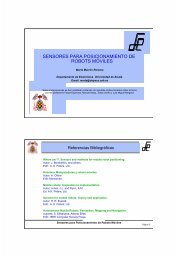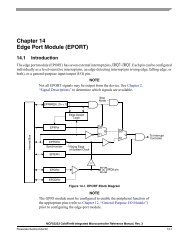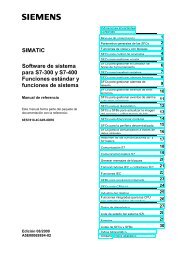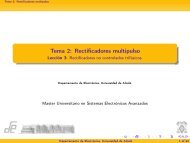El Filtro de Kalman - Departamento de Electrónica - Universidad de ...
El Filtro de Kalman - Departamento de Electrónica - Universidad de ...
El Filtro de Kalman - Departamento de Electrónica - Universidad de ...
You also want an ePaper? Increase the reach of your titles
YUMPU automatically turns print PDFs into web optimized ePapers that Google loves.
Ejemplo:<br />
Introduction<br />
<strong>Filtro</strong> <strong>de</strong> <strong>Kalman</strong><br />
Orígenes<br />
Descripción <strong>de</strong>l <strong>Filtro</strong> <strong>de</strong> <strong>Kalman</strong><br />
Ejemplo:<br />
Conclusiones<br />
Sea un sistema en V.V.E.E <strong>de</strong>finido por:<br />
( ) ( 0,65 0,05 1<br />
G =<br />
H =<br />
0,05 0,65 0)<br />
C = ( 1 0 )<br />
I<strong>de</strong>ntificación ( errónea <strong>de</strong>)<br />
G para el observador:<br />
0,65 + 0,15 0,05<br />
G =<br />
0,05 0,65<br />
( ( )<br />
5 10 0<br />
X 0 = , Σ<br />
5)<br />
0 =<br />
0 10<br />
Consi<strong>de</strong>ramos ruido aprox en el mo<strong>de</strong>lo. P W =<br />
( σ 2 )<br />
, 0<br />
0, 0<br />
¿ Para que valor <strong>de</strong> σ se consigue una mejor estimación ?<br />
Profesor: Daniel Pizarro Pérez<br />
Estimación estocástica: <strong>Filtro</strong> <strong>de</strong> <strong>Kalman</strong>


